Even well-protected dogs can get tick bites so daily checks and knowing how to remove a tick from a dog help prevent disease especially if you are far from the vet clinic.
Ticks attach themselves to your dog’s skin by burrowing their mouthparts into the skin. Once a tick has attached itself to your dog, it will begin to feed on your dog’s blood.
Ticks can remain attached to your dog for several days or even weeks, depending on the species of tick and its size.
How to Remove a Tick From a Dog: Table of Contents
Gather Supplies
You’ll need:
- A pair of fine-tipped tweezers or tick remover tweezers
- Rubbing alcohol
- A small container to hold the tick
- Gloves
- Disinfectant for the bite site (mild soap and water)
- Antibacterial cream/ ointment/ spray
- Good lighting
- Dog treats
Step 1 – Put on the gloves
Ticks carry infectious diseases, some of which can be transferred to humans.
Gloves should be thin (medical gloves) so you can maneuver the hair and the tick.
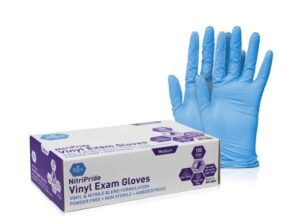
You can find these Powder Free, Latex Free & Rubber Free gloves here.
Step 2 – Poor alcohol in the container
You will need this container to dispose of the tick after removal.
If removed ticks are not disposed they can still attach to the dog again, or any other dog.
Step 3 – Make your dog comfortable
Soothing voice, play and treats should create a safe environment. Most dogs behave well during this process, however, it is not their favorite thing in the world.
They may feel a pinch and a bit of pain when the tick is being removed, so be patient.
If there are multiple ticks, make breaks and give treats.
Step 4 – Expose the tick
You will need both hands to pet down fur around the tick. Once you have a clear view use one hand to hold the fur down and the other hand to hold tweezers.
Make sure you are not grabbing dog hair, it will add to the discomfort.
Step 5 – Pulling the tick out
The easier way to remove ticks is by using tools specifically designed for this purpose. Instructions can be different, so make sure you are following them. Some tools are supposed to be rotated clockwise or counterclockwise, and some are similar to tweezers.
Using Tweezers for Tick Removal
Grasp the tick’s mouthparts as close to your dog’s skin as possible, and gently pull the tick straight out.
Be careful not to twist or crush the tick, as this can cause the tick’s mouthparts to break off and remain in your dog’s skin.
A great tick-removal kit is Tick Killer Platinum
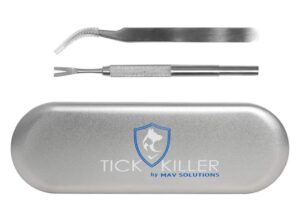
I use this efficient and super affordable kit om dogs. You can find it here.
This is a durable and multi-use tool, current pricing is $12.45.
Using a Tick Removal Tool
If you’re uncomfortable using tweezers to remove the tick, you can use a tick removal tool.
Simply place the tool around the tick’s body, close the tool’s claws around the tick, rotate the tool per instructions, and gently pull the tick straight out.
TickCheck Tick Remover is a 3-piece set.
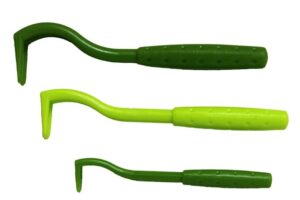
You can browse this $4.95 set or similar tools here.
Step 6 – Examine the tick
When you pull out the tick, check if the entire parasite is out. Make sure the head and all body parts are removed from the dog.
What To Do if the Tick’s Head Gets Stuck in Your Dog’s Skin
If this happens you should have the vet finish the tick removal process.
If you proceed, you will have to dig into your dog’s skin which is not the best idea. Infection and inflammation can get worse and you will still end up in a vet’s clinic.
Step 7 – Dispose of ticks
Once ticks are in the container, close the lid and keep the container in a safe spot in case your dog starts showing any signs of illness.
You will need to show the tick to the vet.
Step 8 – Sanitaaze the wound
You may notice a small red bump on your dog’s skin after the tick is out. This can be simple irritation but should be monitored in the next few days.
Clean the wound with mild soap and water. You can use a cotton ball for this. You can also use antibacterial creams or spray specifically designed for dogs.
Step 9 – Cleanup
Disinfect tweezers or tools with alcohol.
Remove and dispose of the gloves.
Wash your hands thoroughly with soap and water.
Step 10 – Treats time
The best part, treat your dog and give them hugs and kisses. This process should be as pleasant as possible.
Tick Removal Aftercare
Watch your dog closely for the next few weeks.
If your dog shows any signs of illness, such as:
- Lethargy
- Fever
- Loss of appetite
take your dog to the vet and bring the tick with you.
While the exact timeframe for monitoring can vary, it is generally advised to observe your dog for at least a few days to a week after tick removal. This allows for the early detection of any potential signs of tick-borne diseases. However, if your dog shows immediate or severe symptoms after tick removal, it is advisable to seek veterinary attention ASAP.
Be sure to tell your veterinarian that your dog was recently bitten by a tick.
Regular vet visits should also include parasite-prevention procedures.
What Not to Do When Removing a Tick
Avoid some common mistakes when removing a tick from your dog.
- Never try to burn the tick off your dog’s skin
- Don’t apply petroleum jelly to the tick
- Avoid squeezing or crushing the tick during the removal
- Avoid using substances such as alcohol, nail polish, gas, hair spray, etc
Common Types of Ticks
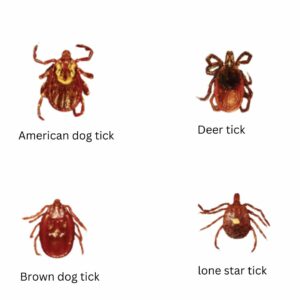
There are several types of ticks that can infect your dog, each with its own unique characteristics and risks. The most common types of ticks include:
Brown Dog Tick
This tick is most commonly found in warmer climates and can transmit diseases such as ehrlichiosis and babesiosis.
Black-Legged Tick
Also known as the deer tick, this tick is commonly found in wooded areas and can transmit Lyme disease, anaplasmosis, and babesiosis.
American Dog Tick
This tick is commonly found in grassy areas and can transmit Rocky Mountain spotted fever and tularemia.
Diseases Transmitted by Ticks
Ticks can transmit a range of diseases to your dog, some of which can be life-threatening if left untreated. Some of the most common tick-borne diseases include:
Lyme Disease
This disease is caused by the bacterium Borrelia burgdorferi and can cause symptoms such as fever, lethargy, joint pain, and lameness.
Rocky Mountain Spotted Fever
This disease is caused by the bacterium Rickettsia rickettsia and can cause symptoms such as fever, vomiting, diarrhea, and muscle pain.
Anaplasmosis
This disease is caused by the bacterium Anaplasma phagocytophilum and can cause symptoms such as fever, lethargy, and joint pain.
Ehrlichiosis
This disease is caused by the bacterium Ehrlichia canis and can cause symptoms such as fever, lethargy, and loss of appetite.
Babesiosis
This disease is caused by the parasite Babesia canis and can cause symptoms such as fever, anemia, and lethargy.
Powassan Virus
This virus is transmitted by the black-legged tick and can cause symptoms such as fever, headache, and vomiting.
How to Check a Dog for Ticks
To check for ticks on a dog examine areas of their body where ticks are commonly found.
- Carefully examine the entire body, paying close attention to areas with less hair, such as the belly, groin, and armpits. Run your fingers through the fur, feeling for any small bumps or unusual lumps.
- Check in and around the ears, including the inside of the earflaps. Ticks can hide in the ear canal or attach to the base of the ear where the skin is thinner.
- Ticks may try to hide on a dog’s eyelids. Gently inspect the eyelids and the area around the eyes
- Examine under the collar, around the neck, and along the collar line. Ticks can seek shelter in this area due to its moisture and relative safety.
- Check underneath the tail
- Ticks may seek out warm and protected areas, such as the armpits. Lift the dog’s front legs and inspect the armpit regions carefully.
- Ticks can hide in the groin area or attach to the skin between the hind legs.
- Check between the toes and paw pads
- You can also check for thicks while you comb your dog’s fur but don’t try to remove it with brushes and combs.
Vet Q&A
Q: What happens if you don’t remove a tick from a dog?
A: Ticks will eventually fall off in a few days, usually when they are nicely fed. However, ticks can cause a reaction in the skin, leading to a small abscess. This can result in localized redness, swelling, and discomfort for the dog.
One of the main concerns with ticks is the transmission of diseases. Ticks can carry and transmit pathogens, including bacteria, viruses, and parasites, which can cause serious illnesses in dogs.
In some cases, certain species of ticks can cause tick paralysis in dogs. Tick paralysis occurs when a neurotoxin present in the tick’s saliva affects the dog’s nervous system, leading to weakness, difficulty walking, and even paralysis.
Q: How do dogs get ticks?
A: Dogs can pick up ticks by coming into direct contact with areas where ticks are present, such as tall grass, wooded areas, or brushy vegetation.
Dogs can also get ticks from contact with other infested animals, including wildlife like squirrels, raccoons, feral cats, and small rodents.
Ticks do not fly or jump but climb or drop onto a dog’s coat when they come in close proximity.
Q: How long do I have to remove a tick from my dog?
A: It takes around six hours from a tick bite to the transmission of pathogens.
Best is to check your dog after every walk and remove the tick immediately.
Q: Can you crush a tick with your fingers?
A: No, this can spread the pathogens and infect you and your dog. Dispose of the tick by dropping it in a small container filled with rubbing alcohol and save it for a few weeks just in case your dog starts showing signs of illness.
You should know that ticks can leach on dogs that have parasite-prevention collars, sprays, or any other form of protection. However, when a tick bites a protected dog it will get poisoned and die of fall.
Dogs can get diseases just from tick bites, so behavioral monitoring is a part of general dog care.
Tick and Flea prevention
There is no one solution fits all and there is no such thing as full protection but prevention is a proven way to lower potential health issues and help your dog feel comfortable.
Here are our recommendations:
Tick collars are a less irritating option compared to chewable and serums, and they protect from flees, ticks, and mosquitos that transmit heartworms.
Our pick is Flea and Tick Collar with an adjustable size that fits all dogs.
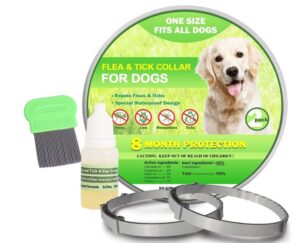
you can find it here.
A great tick and flea treatment is K9 Advantix. You should know that it can be irritating for a couple of minutes to a day, however, I use this in combination with a collar for best protection. Irritation is temporary and there are no burns or redness after initial application.
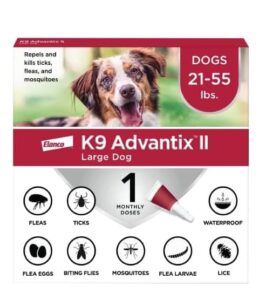
You can browse this or similar options here.
make sure you know your dog’s weight before purchasing these treatments.
My Senior Paws is a participant in the Amazon Services LLC Associates Program, an affiliate advertising program designed to provide a means for sites to earn advertising fees by advertising and linking to Amazon.com. We also participate in other affiliate programs which compensate us for referring traffic.




